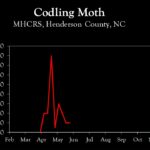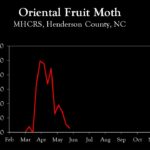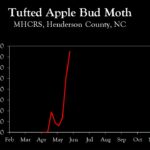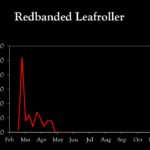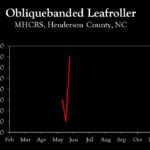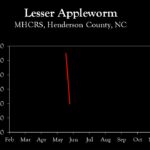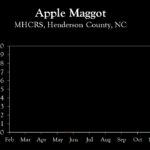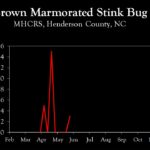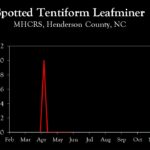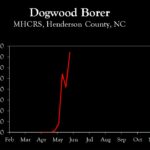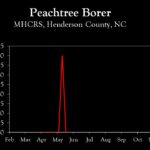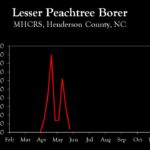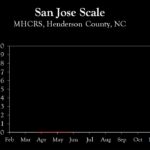WNC Orchard Insect Pest Populations – May 30, 2023
go.ncsu.edu/readext?938648
en Español / em Português
El inglés es el idioma de control de esta página. En la medida en que haya algún conflicto entre la traducción al inglés y la traducción, el inglés prevalece.
Al hacer clic en el enlace de traducción se activa un servicio de traducción gratuito para convertir la página al español. Al igual que con cualquier traducción por Internet, la conversión no es sensible al contexto y puede que no traduzca el texto en su significado original. NC State Extension no garantiza la exactitud del texto traducido. Por favor, tenga en cuenta que algunas aplicaciones y/o servicios pueden no funcionar como se espera cuando se traducen.
Português
Inglês é o idioma de controle desta página. Na medida que haja algum conflito entre o texto original em Inglês e a tradução, o Inglês prevalece.
Ao clicar no link de tradução, um serviço gratuito de tradução será ativado para converter a página para o Português. Como em qualquer tradução pela internet, a conversão não é sensivel ao contexto e pode não ocorrer a tradução para o significado orginal. O serviço de Extensão da Carolina do Norte (NC State Extension) não garante a exatidão do texto traduzido. Por favor, observe que algumas funções ou serviços podem não funcionar como esperado após a tradução.
English
English is the controlling language of this page. To the extent there is any conflict between the English text and the translation, English controls.
Clicking on the translation link activates a free translation service to convert the page to Spanish. As with any Internet translation, the conversion is not context-sensitive and may not translate the text to its original meaning. NC State Extension does not guarantee the accuracy of the translated text. Please note that some applications and/or services may not function as expected when translated.
Collapse ▲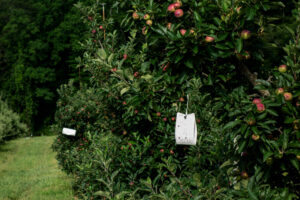 Codling moth: Based on degree-day accumulations, first generation egg hatch of codling moth is about 25% and 61% complete in Henderson and Cleveland Counties, respectively. In lower elevations, the first generation is almost complete and the need for insecticide use beyond next week should decline. In Henderson County and similar elevations, codling moth is expected to be a concern for about two more weeks. With that said, moth populations have been quite low throughout the region, and use of pheromone traps to monitor populations would be valuable for eliminating unnecessary insecticide applications.
Codling moth: Based on degree-day accumulations, first generation egg hatch of codling moth is about 25% and 61% complete in Henderson and Cleveland Counties, respectively. In lower elevations, the first generation is almost complete and the need for insecticide use beyond next week should decline. In Henderson County and similar elevations, codling moth is expected to be a concern for about two more weeks. With that said, moth populations have been quite low throughout the region, and use of pheromone traps to monitor populations would be valuable for eliminating unnecessary insecticide applications.
In orchards using mating disruption for codling moth and OFM, insecticidal control of the first generation is generally not necessary. However, insecticidal control of the tufted apple bud moth is often necessary, so see below for the timing of TABM applications and recommended insecticides.
Oriental fruit moth: Based on DD accumulations, second generation oriental fruit moth emergence is underway throughout the region. However, this generation is rarely a problem in orchards where first generation control was achieved (i.e., insecticides were applied at petal fall).
Tufted apple bud moth: Season-long control of TABM can be achieved with one well-timed insecticide application any time between about 750 and 1200 DD. In lower elevations (1,000 ft), about 820 DD have accumulated since biofix, which coincides with about 10% egg hatch, so there is about a two-week window beginning now to target this insect. In higher elevations (2,000 ft), application should be made sometime in a 2 to 3-wk period beginning next week. Insecticides recommended for TABM include Intrepid, Delegate or a diamide (Altacor, Exirel or Verdepryn). It is important to keep in mind that first generation codling moth is still a potential problem when TABM sprays are made, so choose a product that will not be used for second generation codling moth in July.
Learn more about southeastern apple insect pests at the Apple Insect Management page.
2023 Average Weekly Trap Captures
| HENDERSON COUNTY | |||
| Insects per trap | |||
| May 15 | May 22 | May 30 | |
| Codling moth | 2.0 | 1.0 | 1.0 |
| Oriental fruit moth | 29.0 | 11.0 | 6.0 |
| Tufted apple bud moth | 13.0 | 50.0 | 75.0 |
| Redbanded leafroller | 0.0 | 0.0 | 0.0 |
| Obliquebanded leafroller | 3.0 | 1.0 | 7.0 |
| Lesser appleworm | – | 11.0 | 4.0 |
| Apple maggot (abandoned and research orchards) | – | 0.0 | 0.0 |
| Brown marmorated stink bug (commercial) | – | – | – |
| Brown marmorated stink bug (unsprayed) | 0.0 | 0.0 | 1.0 |
| Spotted tentiform leafminer | 0.0 | 0.0 | 0.0 |
| Dogwood borer | 27.0 | 21.0 | 37.0 |
| Peachtree borer | 4.0 | 0.0 | 0.0 |
| Lesser peachtree borer | 31.0 | 14.0 | 2.0 |
| San Jose scale | 0.0 | 0.0 | 0.0 |
*Note that these averages illustrate only the timing of insect emergence and fluctuations in populations, and are not representative of population levels in any given orchard. The only way to have an accurate assessment of an individual orchard’s populations is to set up traps in that orchard.
2023 Accumulated Degree Days
| HENDERSON COUNTY | ||||
| May 15 | May 22 | May 30 | ||
| Codling moth (Biofix: April 7) | 338 | 443 | 525 | |
| Oriental fruit moth (Biofix: March 24) | 662 | 801 | 922 | |
| Tufted apple bud moth (Biofix: April 21) | 308 | 448 | 569 | |



